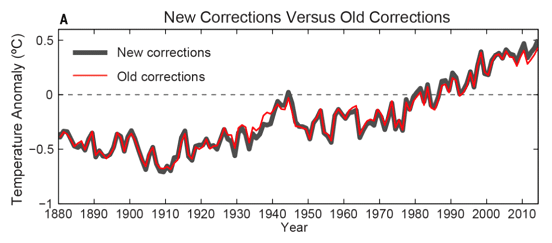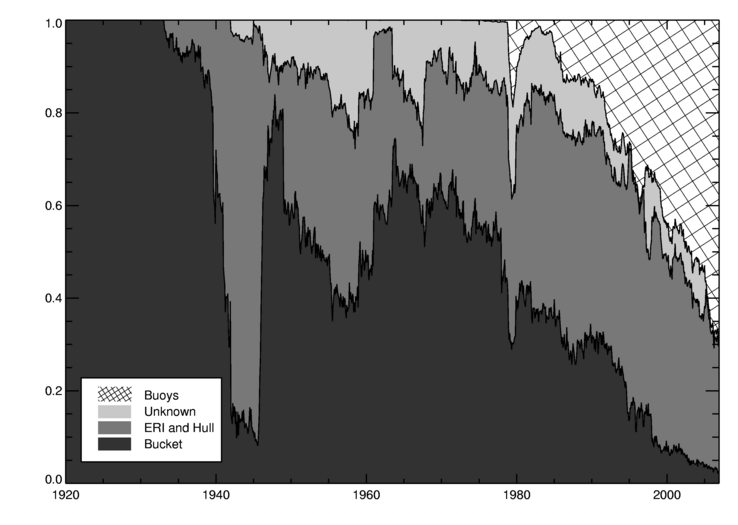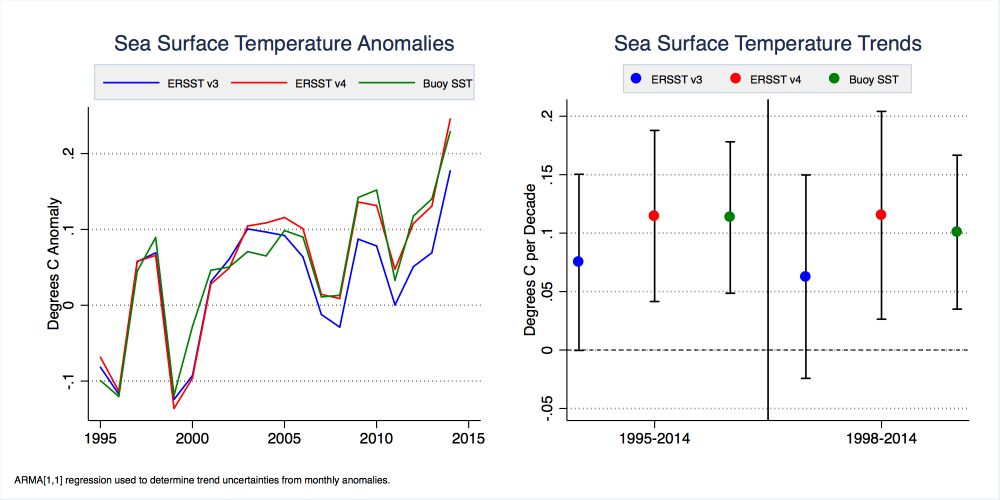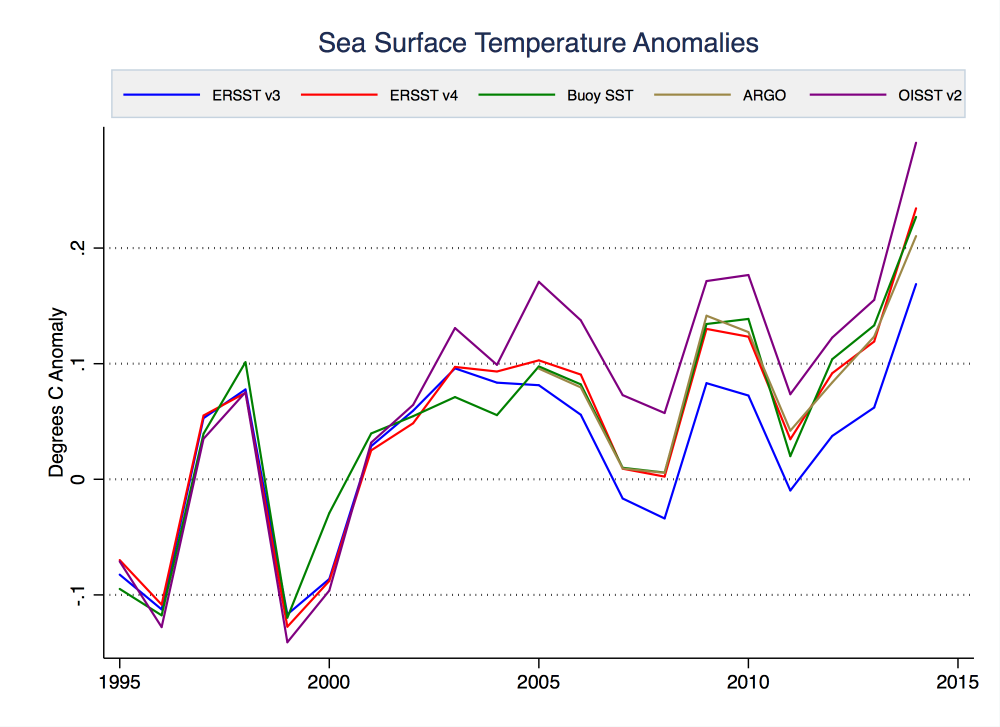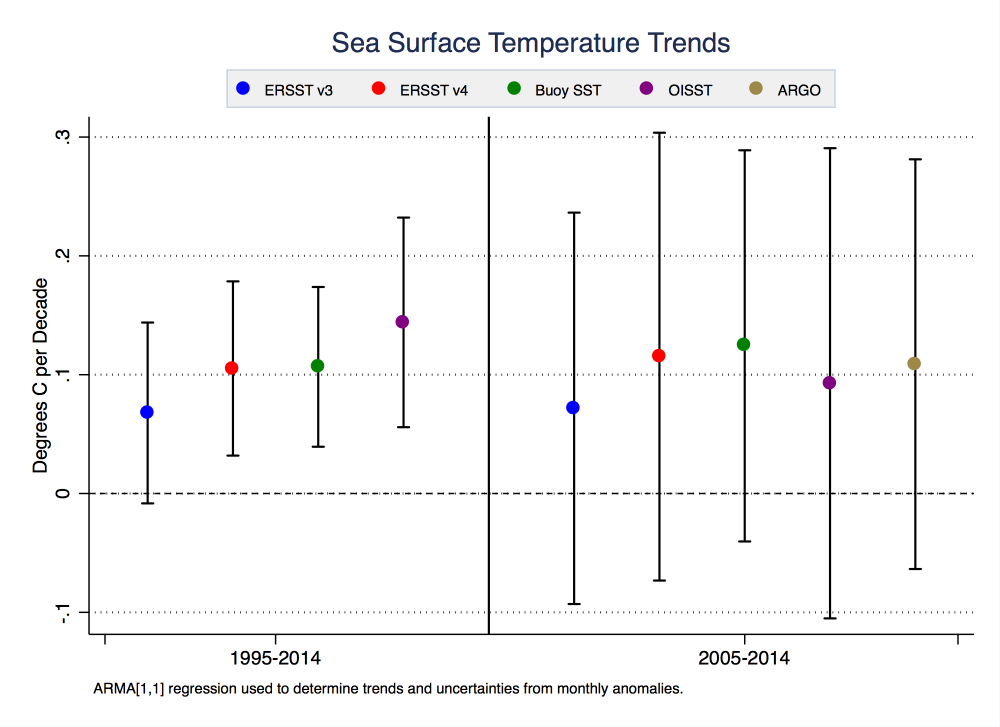by James Hansen, November 27, 2015
Earlier this year I received a message from a long-time reader of my Communications[1], who was persuaded of the urgency of the climate problem. As a significant supporter of the Democratic Party, he had the opportunity to meet President Obama, and he was preparing a specific question: would the President be willing to “meet with Jim Hansen,” who, the supporter asserted, understood the problem as well as anyone and has “some viable ways to fix the problem”?
Obama’s response: he had already read my stuff (presumably meaning my book [2]), but would be interested in talking if it were about policy (presumably meaning that he was already convinced about the reality of the science). My response to the supporter was that we should check whether the offer was real after my long-overdue “Ice Melt” paper was submitted for publication.
This summer, after submitting the paper, my supporter tried valiantly, but dolefully reported that he could not get through, the President was too well protected. Not so easily deterred, I reported the matter to Obama’s Science Adviser, John Holdren, and sent him my Ice Melt paper. Holdren responded that it was a valuable paper, but he ignored my request to meet the President.
So who does the President listen to? It is worth revealing. But first let’s note facts that must be included in honest capable advice. China now has the largest fossil fuel emissions (Fig. 1a). U.S. emissions are dwindling a bit, and they will continue to be a decreasing portion of ongoing global emissions. India, the #3 emitter behind the U.S., is moving up fast.
However, human-caused climate change is not proportional to current emissions; instead, climate change depends on cumulative emissions[3].
CO2 from early emissions is now largely incorporated into the ocean and biosphere, but it had a longer time to affect climate, compensating for the small fraction remaining in the air today. Stated differently, the date of burning is irrelevant because of the millennial lifetime in the Earth system of CO2 released in burning of fossil fuels.
We see (Fig. 1b) that the U.S. is responsible for more than a quarter of global climate change. Europe is also responsible for more than one quarter. China is responsible for about 10%, India for 3% and so on. However, even Fig. 1b is misleading about responsibilities.
Fig. 1. Annual 2014 and cumulative (1751–2014) fossil fuel CO2 emissions (CDIAC data, BP updates).[4]
Fig. 2. Per capita cumulative (1751–2014) fossil fuel CO2 emissions4 based on 2010 populations.
Per capita responsibility for climate change (Fig. 2) has the UK, where the industrial revolution began, as most responsible, followed closely by the U.S. and Germany. Chinese responsibility is an order of magnitude smaller and India’s share is barely visible (Fig. 2).
Another crucial fact is that we have already burned most of the carbon that we can afford to put into the climate system[5],[6] (even under the flawed proposition that 2 °C global warming is a safe “guard rail”). In other words, the West burned most of the world’s allowable carbon budget.
The scientific community agrees on a crucial fact: we must leave most remaining fossil fuels in the ground, or our children and future generations are screwed. Yet Obama is not proposing the action required for the essential change in energy policy direction, even though it would make economic sense for developed and developing countries alike, especially for the common person.
How can such miserable failure of political leadership be explained, when Obama genuinely wants climate policy to be one of his legacy issues? Don’t blame it on the fossil fuel industry; many industry leaders are beginning to say sensible things about the direction needed. And Obama is in his final political office – he could act – he does not need oil industry money.
My thesis is that Obama actually means well, has some gumption, and wants effective actions to be taken, but he is being very poorly advised. As a result, people at the working level have been given no effective direction and are producing little. Mostly they are working on spin.
Get ready for the great deceit and hypocrisy planned for December in Paris. Negotiators do not want the global leaders to look like fools again, as they did in Copenhagen. They are determined to have leaders clap each other on the back and declare the Paris climate negotiations a success.
A prelude of Paris deceit is shown by Chart 3, a press conference with John Podesta, once czar of Obama’s climate policy, and Energy Secretary Ernie Moniz. They express optimism on the Paris summit, citing an agreement of the U.S. and China to work together to develop carbon capture and storage (CCS). That spin is so gross, it is best described as unadulterated 100% pure bullshit.
I am not criticizing Ernie Moniz, an exceptional Energy Secretary who did yeoman service in negotiations to limit nuclear weapons proliferation. I am only pointing out the dishonest spin that is being put on total failure to address the fundamental issue.
China and India coal use is the main source of growing global CO2 emissions (Fig. 4), but China and India are not going to attach carbon capture and storage to their thousands of coal plants, which would be hugely expensive. We (the West) used coal and other fossil fuels to raise our
Chart 3. Excerpt from news article (The Hill, 24 August 2015).
standard of living, without capturing the CO2 – and in the process we burned much of China and India’s fair share of the global carbon budget. If that means China and India must capture CO2, the West should pay the cost – but we know that is not going to happen either.
Solution requires realistic definition of the problem. The fundamental fact is that fossil fuels are the cheapest energy for developing countries, providing the best chance to raise people from poverty to a higher standard of living. China uses coal for that purpose, as does India, and they will continue to do so. Climate goals and targets will not change that fact.
However, fossil fuels appear cheapest to the consumer only because they do not incorporate their costs to society, including the effects of air pollution, water pollution and climate change. Economies are more efficient if energy prices are honest, including external costs in the price.
A consequence of this fundamental truth is that climate change can be addressed at no net cost, indeed with economic gain, provided that true costs are added into the price gradually. A simple
Fig. 4. Fossil fuel and cement CO2 emissions of China and India by fuel. source4. There are uncertainties in both the coal use rate and the carbon content of the fuel, as discussed elsewhere.
transparent way to do this is to collect an across-the-board (oil, gas, coal) carbon fee at domestic mines and ports of entry. If the funds collected are given in equal amount to all legal residents, the fee is revenue neutral and spurs the economy. This is a conservative approach, because it allows the market to assist change and it does not provide a dime to make government bigger.
Such a common sense approach has not been tried by any government. Instead legislation is proposed by liberal governments who want funds for bigger government or programs such as renewable energy subsidies. A carbon tax is hidden in “cap-and-trade-with-offsets,” yielding higher energy prices, more government controls, and a burden on the public and businesses. The proposed bill in the United States (Waxman/Markey) included 3500 pages of giveaways to every lobbyist who could raise his arm to write a paragraph that was then stapled into the bill.
I have suggested, asked, or begged lawmakers, in more nations and states than I can remember, to consider a simple, honest, rising carbon fee with all funds distributed to legal residents. Instead, invariably, if they are of a bent to even consider the climate issue, they propose the discredited ineffectual cap-and-trade-with-offsets (C&T) with all its political levers.
In my frustration, I describe C&T as half-assed and half-baked, which is an accurate assessment if the objective is a formulation that can address the global climate problem. C&T is half-assed, because there is no practical way to make it global as it requires individual adoption by 190 nations, and half-baked because there is no enforcement mechanism.
In contrast, a carbon fee would require agreement of only a small number of the major economic powers, for example, the United States and China. Upon agreement, they would place a border duty on products from nations without an equivalent carbon fee, and they would give fee rebates to domestic manufacturers for exports to non-participating nations. This would be a huge incentive for other nations to have an equivalent carbon fee, so they could collect it themselves.
Why would conservatives in the U.S. agree to a carbon fee? Utility and oil industry executives and other “captains of industry” that I have encountered in the past two decades invariably approve of such an approach – indeed, utility CEOs almost beg for such simple guidance for their investments, rather than more government prescriptions and regulations. It is not necessary to destroy capitalism to fix the climate – most captains of industry want to be part of the solution.
Would China be willing to impose a domestic carbon fee? China has little responsibility for global climate change (Fig. 2) and will surely give first priority to raising its living standards. Same for India. They have every right to do that – they did not cause the climate problem. Furthermore, raising human living standards is the best thing for the natural world, the way to reduce human population growth, putting less pressure on other species.
But consider this. China and India have huge air pollution problems from burning of fossil fuels. They also stand directly in the path of some of the greatest impacts of climate change, including hundreds of millions of people living near sea level. The possibility of needing to handle millions of climate refugees, including their own citizens as well as those from Bangladesh and other low latitude countries, is a real threat.
In such countries a carbon fee and dividend to legal residents has multiple merits. It encourages the public to pay attention to their fossil fuel use. The fee and dividend is progressive, with most low income people coming out ahead, because their added energy costs are outweighed by the dividend, so it addresses growing income inequality.
The need for a citizen to be registered to receive the dividend helps to minimize undocumented aliens. Perhaps most important, it makes
Chart 5. Excerpt from news article (Reuters, 28 October 2015).
citizens feel that they are part of the solution – instead of complaining about air pollution and other woes, they have a means to help solve the problems.
Fee-and-dividend is not a panacea, many other things are required including smart technology development, but a rising carbon fee and dividend is the required underpinning, the sine qua non. Economic studies show that in the United States fee-and-dividend would decrease carbon emissions by 30% in 10 years and more than 50% in 20 years, while increasing GNP and creating more than 3 million new jobs.[7],[8]
Don’t be misled by some economists or pseudo-economists who say, oh let’s do something better than giving 100% dividends, let’s reduce some other tax. The public will not buy that one. And soon it would be forgotten what tax was reduced, people would demand that the carbon tax be removed or at least not rise – because the carbon fee is a tax if there is not 100% dividend.
How do we know that a “cap” approach can never solve the climate/fossil fuel problem? You must beg 190 nations to each set a low cap. What is India’s cap? Why would India accept a low cap, when they have not caused the climate problem (Fig. 2)? But for illustration, let’s say that miraculously India agreed to have a low carbon cap across all carbon sources (even though caps are never across-the-board on all fossil fuels at the source). What would be the effect of that success? It would reduce demand for the fossil fuels, making them cheaper, thus facilitating their use in other places. The solution is a carbon fee that is made near-global via border duties.
The Threat of a Bad Paris Accord
The danger is that Paris will lay a Kyoto. That is the easy way out. Each country promises to do better, but there is no global carbon fee. Fossil fuels remain cheap. Someone keeps burning them.
Understandably, developing countries focus on near-term support to deal with climate impacts, as they have done little to cause climate change but stand to be hit hard. It makes sense to provide funds, because cooperation of developing countries is needed to sequester carbon via improved forestry and agricultural practices, and to limit trace gas emissions. Mutual needs can make this work, with payments contingent on cooperation and success in each program.
However, we cannot let developed countries use these payments to buy business-as-usual. The future of people in all countries requires rapid phasedown of fossil fuel emissions. An across-the-board carbon fee is needed to achieve rapid emissions reduction, avoiding the Kyoto debacle.
Yet UN climate chief, Christiana Figueres declares that the Paris accord will not include a carbon price (Chart 5). “(Many have said) we need a carbon price and (investment) would be so much easier with a carbon price,” Figueres said, “but life is much more complex than that.”
Baloney. A flat carbon fee is too complex? Figueres deserves our respect and thanks for hard work, but we cannot let politeness damage the future of our planet and loved ones.
I know the “complexity” Figueres encounters with global leaders, notably German Chancellor Angela Merkel[9]. Merkel is suggesting that others adopt the German approach: close nuclear power plants, subsidize renewables, reduce emissions via resulting high electricity prices and a cap & trade scheme, and export production of many products for domestic consumption to other countries (where fossil fuels may be used). Result: global emissions decline little, if at all.
Germany is providing a valuable experiment. Can a wealthy nation with exceptional engineering ability and a public willing to subsidize renewable energies rapidly phase out carbon emissions?
However, it is a mistake to assume that all other nations will follow the German example or even that this approach leads to carbon-free electricity, which is the fundamental technical requirement for phasing out CO2 emissions. Indeed, it is disquieting that Germany is building coal-fired power plants and other nations are building gas-fired power plants. If this continues, the “technology lock-in” from long-lived power plants could guarantee expanded fracking and high CO2 emissions through most of this century.
The danger that Paris may mimic Kyoto is heightened by the “guard rail” concept, which allows governments to promise future emission reductions rather than set up a framework that fosters rapid emissions reductions. Climate science does not define a safe guard rail; instead science indicates that atmospheric CO2 is already into the dangerous range, as shown by a group including world experts in the carbon cycle, paleoclimate and other relevant areas.[10]
The valid scientific message is that emissions must be reduced as rapidly as practical. And in turn, that implies the price of fossil fuels must be made honest by adding a rising carbon fee.
However, instead, in pre-Paris negotiations each nation is being asked how much it will reduce emissions. These pledges are then used to estimate whether global temperature will be within the “guardrail.”
Meanwhile low fossil fuel prices continue, guaranteeing that more fossil fuel infrastructure will be built and high emissions will continue. Valuable time is wasted.
Fig. 6. Fossil fuel emissions growth this century in the 21 nations with largest current emissions.4
The situation is summarized in the emissions changes of the 21 highest emitting nations (Fig. 6). Global emissions increased almost 50% in the last 14 years. Most developed nations achieved only small reductions, although in Italy and the United Kingdom reductions are about 25%.
The bottom line is this: rapid reduction of global emissions is not happening without a fundamental economic drive toward clean energies. A rising revenue-neutral carbon fee7,8 would strengthen economies. So why should this not be pursued and be potentially achievable?
In fact, with agreement between the United States and China, it could be achieved. As far as I know, they have not ceded authority to a United Nations bureaucrat to decide what is possible.
If the U.S. fails to lead, it seems unlikely that China would immediately take the lead to propose a carbon fee, given that China is not the cause of most climate change. However, China may take leadership as their self interest in preserving climate grows, especially if bickering between political extremes continues to hamstring the United States[a]. In that case, the best hope for young people and the planet will be rational Chinese leadership, which will likely find many other nations ready to form a coalition of the willing.
You might argue that such a diplomatic agreement would never be approved by conservatives (not only in the U.S., but also other nations). I disagree. Thoughtful conservatives, behind the scenes, are coming around to the idea of a revenue-neutral carbon fee. Obama’s carbon regulations are of little value for reducing global emissions, but they are a useful bargaining chip for persuading conservatives to support a revenue-neutral carbon fee as a compromise.
I do not suggest that Obama would get prompt agreement from the U.S. Senate for a Paris accord with a carbon fee. Acceptance likely would take a number of years, but if an international framework for common domestic carbon fees is set up (with border duties on products from nonparticipating nations), pressure to join would mount as climate impacts grow.
Compare that approach with the route Obama seems to be on. First, note that his signature victory (EPA regulations that reduce domestic emissions), assuming that it stands up in court, amounts to only several percent of U.S. emissions, which is about one year’s growth of global emissions during the past 14 years. Second, what is the chance that what he is proposing for Paris will fly with the U.S. Senate? Zilch. Even many Democrats would oppose it. Not much better than the Clinton-Gore 97-0 blowout. The fossil fuel industry’s ‘I am an energy voter’ campaign, energy independence, easily wins. They would laugh all the way to the bank.
Obama’s climate legacy, on his present course, will be worse than a miserable failure: it will be an unnecessary miserable failure. His popularity in 2008 was 70% and his party controlled both houses of Congress. Anniek and I wrote a letter[11] to Michelle and Barack Obama in December 2008 explaining the climate situation and needed policies, which he could have initiated then. However, John Holdren would not deliver the letter, arguing that he would not be confirmed as Science Adviser for months. Obama, instead, listened to Big Green.
Big Green consists of several “environmental” organizations, including Environmental Defense Fund (EDF) and National Resources Defense Council (NRDC), each with $100+M budgets, each springing from high-minded useful beginnings, each with more high-priced lawyers than you can shake a stick at. EDF, with purblind equation of the sulfur and carbon pollution problems, was chief architect of the disastrous Kyoto lemon. NRDC proudly claims credit for Obama’s EPA strategy and foolishly allows it to migrate to Paris.
Obama still has a chance at a positive climate legacy, if he ditches Big Green. Better to sit down with the Chinese leaders, who are technically trained, rational, and understand we are together in the same boat. We had better figure out how to plug the leaks together or we sink together.
Watch what happens in Paris carefully to see if all that the leaders do is sign off on the pap that UN bureaucrats are putting together, indulgences2 and promises to reduce future emissions, and then clap each other on the back and declare success.
In that case President Obama will have sold our children, and theirs, down the river.
References
[a] As I will discuss in Part II, it is not difficult to make a case that extreme liberals have done as much damage to the future of young people and other life on Earth as “human-made climate change is a hoax” extremists.
[3] Hansen, J., M. Sato, R. Ruedy, P. Kharecha, A. Lacis, R.L. Miller, L. Nazarenko, K. Lo, G.A. Schmidt, G. Russell, 2007: Dangerous human-made interference with climate: A GISS modelE study. Atmos. Chem. Phys., 7, 2287-2312.
[5] Hansen, J., P. Kharecha, M. Sato, V. Masson-Delmotte, F. Ackerman, D.J. Beerling, P.J. Hearty, O. Hoegh-Guldberg, S.L. Hsu et al., 2013: Assessing “dangerous climate change”: Required reduction of carbon emissions to protect young people, future generations and nature. PLOS ONE, 8, e81648, doi:10.1371/journal.pone.0081648.
[6] Intergovernmental Panel on Climate Change (IPCC): Climate Change 2013, Stocker, T., Dahe, Q., Plattner, G.K., et al., eds., Cambridge University Press, 1535 pp., 2013.http://www.ipcc.ch/report/ar5/wg1/#.UlCweRCvHMM.
[8] Hansen, J.E., 2015: Environment and development challenges: the imperative of a carbon fee and dividend, in The Oxford Handbook of the Macroeconomics of Global Warming, Eds. L. Bernard and W. Semmler, Oxford University Press, doi:10.1093/oxfordhb/9780199856978.013.0026 also available www.columbia.edu/~jeh1
[9] Eight years ago, on the advice of the Science Adviser to Merkel, I foolishly agreed to withdraw an open letter to Merkel on energy policies that was to be published in Die Zeit, instead agreeing to a trip to Berlin to discuss the matter with the German government, on the rationale that such was the way to really have an impact on policy2.
As it turned out I only met Minister Gabriel, who promptly said that cap & trade and phase-out of nuclear power were irrevocable German policy. The function of their 2°C “guardrail” seemed to be to allow several decades for phasing down CO2 emissions. In response to repeated assertion that the target should be 350 ppm, not 2°C, he repeatedly said they could “tighten the carbon cap”. In response to the question of what is the cap for India, which proves that a cap approach cannot work, he had no answer. Any serious policy discussion was successfully avoided.2
[10] Hansen, J., M. Sato, P. Kharecha, D. Beerling, R. Berner, V. Masson-Delmotte, M. Pagani, M. Raymo, D. Royer, and J.C. Zachos, 2008: Target atmospheric CO2: Where should humanity aim? Open Atmos. Sci. J., 2, 217-231.



